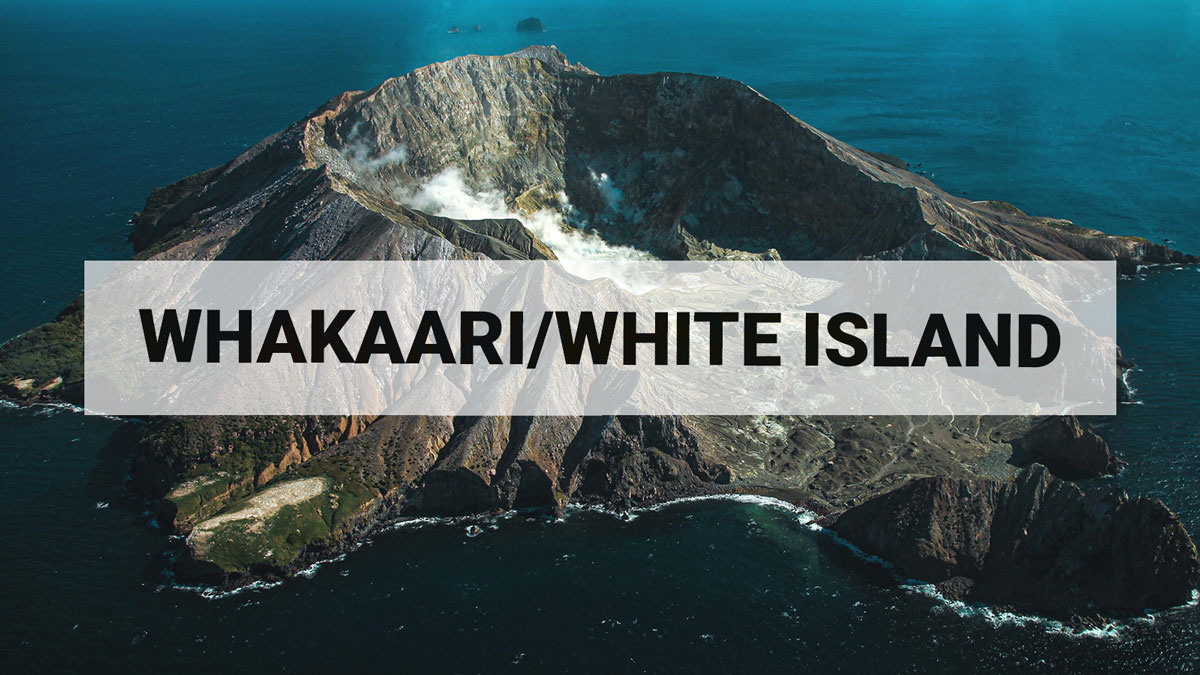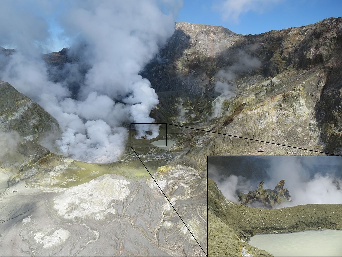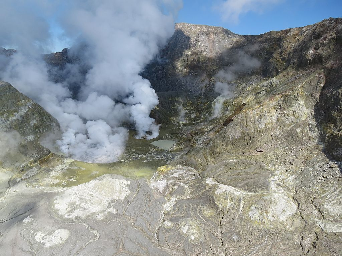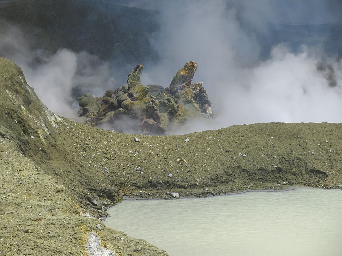
Volcanic Alert Bulletin WI-2012/16 - White Island Volcano
GNS Science volcanologists have noticed a spiny lava dome at White Island in an existing small crater formed as a result of eruptions in August. The Volcanic Alert Level has been raised to 2 and the Aviation Colour Code to Orange.
“On Monday we were able to see a spiny lava dome that has grown in a crater formed by an eruption on 5 August. We were really lucky the steam was not too thick and got great views. The dome is probably 20 – 30 metres across and has spines sticking up. In more than 30 years visiting White Island I've never seen anything like it”, said GNS Science volcanologist Brad Scott.
“If you imagine a volcano is like a tube of toothpaste then a lava dome is like the congealed, dried toothpaste that has come out of the tube. It doesn't move like a lava flow but grows from the inside as new magma comes up and pushes the already cooled magma upwards and outwards” said Mr Scott.
Comments from tour operators at White Island suggest the dome may have been visible for two weeks, but not as clearly as Monday. How long the dome has been growing is unknown, but possibly since the ash eruption in early August.
Lava domes are usually formed by magma that has lost most of its gases so that it is very sticky. This causes the magma to pile up over the volcanic event and form a dome. Lava domes are common at some volcanoes, but have never been seen before at White Island. Magma last reached the surface at White Island in 2000. At that time it was erupted explosively as molten rocks called volcanic bombs, rather than forming a dome.
“We've raised the Volcanic Alert Level and Aviation Colour Code to reflect the new style of eruptive activity”, said GNS Science head volcanologist Gill Jolly. “Our concern is that lava dome growth can be accompanied by explosive eruptions and could impact people on the island. We need to see if the dome is continuing to grow. If it's not growing then we will be less concerned”.
GNS Science continues to closely monitor White Island through the GeoNet project.
Background
The Volcanic Alert Level ranges from 0 to 5 and defines the current status at a volcano. Level 2 indicates minor eruptive activity.
Aviation Colour Codes are based on four colours and are intended for quick reference only in the international civil aviation community. Code Orange indicates that a volcanic eruption is under way with no or minor ash emission.
Volcanoes can erupt in many different ways. They can erupt explosively like Tongariro earlier this year when rocks and ash were hurled into the sky. They can erupt effusively with lava flows like Ngauruhoe in 1954 or in Hawaii. A lava dome is a type of effusive eruption.
Brad Scott, Steven Sherburn Volcanologists






